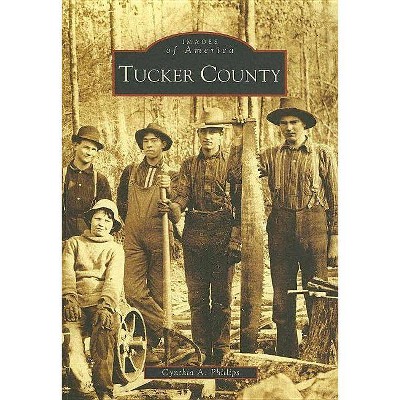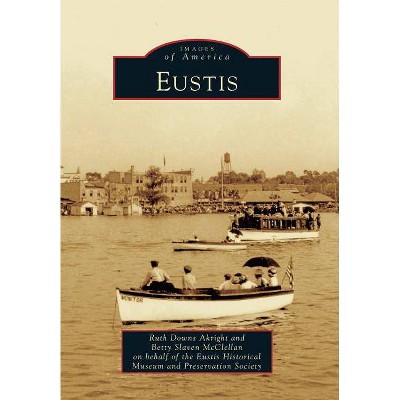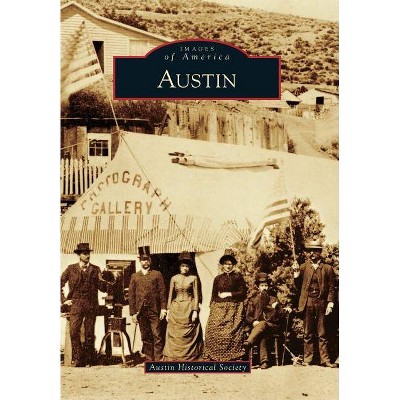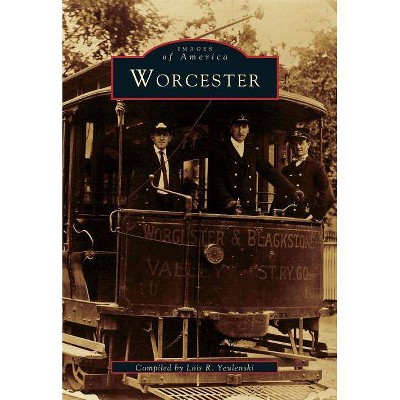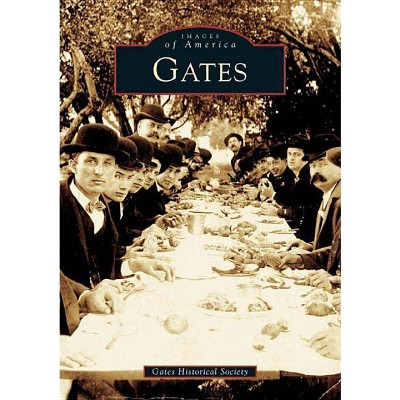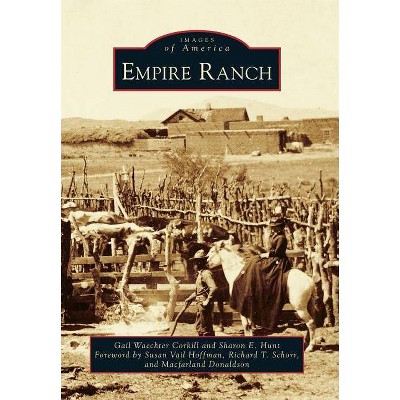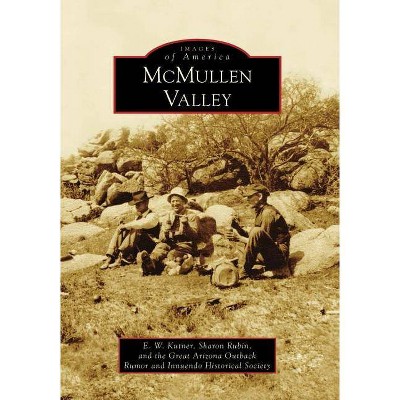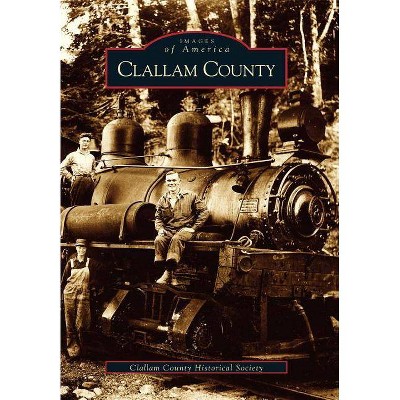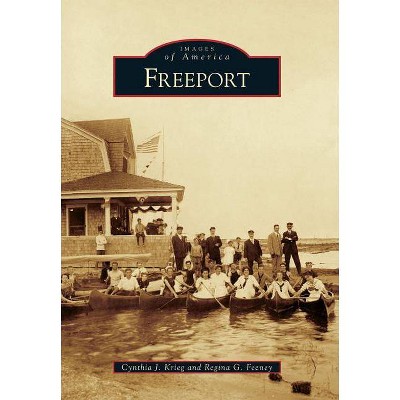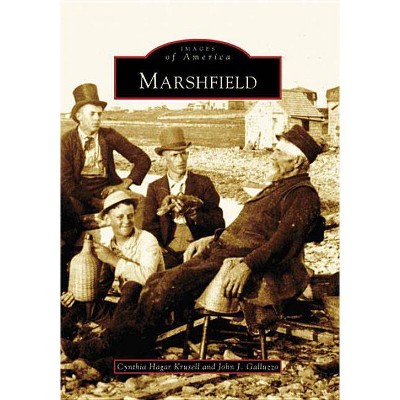San Leandro - (Images of America (Arcadia Publishing)) by Cynthia Vrilakas Simons (Paperback)
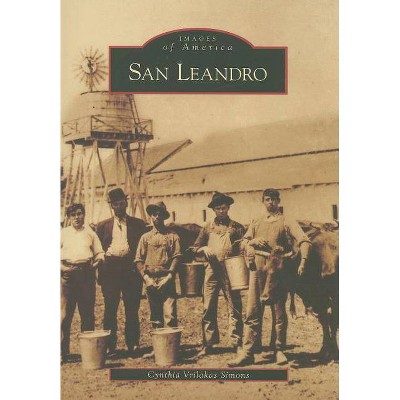
Similar Products
Products of same category from the store
AllProduct info
<p/><br></br><p><b> Book Synopsis </b></p></br></br>Cherry festivals, Holy Ghost festas, oyster pirates, tractors, squatters, Portuguese the many threads of San Leandro s past have woven a rich historical tapestry underlying the modern city of San Leandro. These 15 square miles between San Francisco Bay and the East Bay hills have been an Ohlone village, a Spanish rancho, a small farm town, the Portuguese capital of the West, an industrial center, and a major metropolitan suburb as a succession of new people has transformed the area."<p/><br></br><p><b> Review Quotes </b></p></br></br><br>Publication: The Oakland Tribune <br>Article Title: Picturing the early days of San Leandro <br>Author: Martin Ricard <br>Date: January 28th, 2008 <p><br>SAN LEANDRO -- If a picture is worth a thousand words, then Cindy Simons has one heck of a story to tell. <br>The retired San Leandro librarian is digging into her treasure trove of city history and collecting thousands of vintage photographs for a new book she is writing that, when published in the fall, will become part of the "Images of America" series. Arcadia Publishing produces the series to chronicle the histories of various communities around the country through pictures. <br>San Leandro already has two history books, one published in the 1950s and the other for the city's centennial in 1972. But this history will be different, Simons said, because it will be more modern and include a lot of other details that words alone just can't describe. <br>"I think San Leandro's got so many great stories," she said. "And I think people will enjoy them in this book." <br>Simons, who lives in Castro Valley, said she has been fascinated with SanLeandro's history ever since she began researching the city's past for a library project. <br>That passion helped her create the main library's History Room and, later, lead the exhibits at the city's Art Gallery and History Museum downtown. <br>When she was organizing the museum's exhibits, Simons said, she discovered scores of old photographs that captured rare moments never before seen in one place. <br>For example, most are familiar with the fact that, before Oakland became the county seat, San Leandro was home to the Alameda County Courthouse. <br>And in her research, Simons found a photo, taken just before the great earthquake of 1868, of several men standing in front of the courthouse. At first glance, it looks like a typical picture. <br>But with a closer look, two familiar names appear: Harry Morse, the noted sheriff who became famous for capturing and killing some of California's most notorious outlaws, and J. W. Josselyn, the young deputy county clerk who became the first and only victim to die in San Leandro in the quake after he reported to work early and was struck by a falling stone cornice on his way into the courthouse. <br>This was a rare and quirky moment in San Leandro history, but, nonetheless, one of the many interesting details Simons said exist in the photos she has collected. <br>In addition to including photos like this one, Simons' book will cover what she calls "the many layers" of San Leandro's past, from the Ohlone Indians and Spanish and Portuguese settlers to the Gold Rush squatters, farmers and World War II tract homes. <br>The book also will delve into some of the city's more recent past, from when blatant housing discrimination during the 1970s and 1980s kept many black families from buying homes in the city to how San Leandro is now one of the most diverse cities in the state. <br>All are examples, Simons said, of changes the city has gone through -- and a past residents can reflect on. <br>"I hope that they enjoy it," she said. "History has wonderful lessons, and it can be fun to read. ... This book is just an accessible way to find out what used to be there." <br>If you have any old photographs that may be considered historical to San Leandro, Simons would like to include them in her new book. She is particularly interested in photos of Holy Ghost festivals, schools, businesses, neighborhoods, Cherry Festivals, the 1972 centennial celebration, Tony Lema and Art Larsen. Contact Simons at simons6589@comcast.net or at 510-910-3215. <br><br><br>Title: New Book Looks at City s History <br>Author: Amy Sylvestri <br>Publisher: San Leandro Times <br>Date: 11/19/2008 <br>Before his writing career took off, Jack London made a few extra bucks in a less noble profession he was an oyster pirate, sneaking onto the San Leandro shore at night and stealing shellfish to sell at local markets. <p><br>That is just one of the surprising bits of information that local historian Cindy Simmons uncovered while she researched her new book on the city s history, Images of America: San Leandro. <p><br>Simmons worked for over 30 years as a librarian with a particular interest in San Leandro s past. She worked to cultivate the San Leandro room at the Main Library as well as several of the displays at Casa Peralta and she also contributed to the downtown history walk, so she was a natural candidate for writing about the city. Similar books about Hayward, Oakland, and San Lorenzo have already hit the shelves. <p><br> I didn t have much time, but the experience was fascinating, said Simmons, who had just six months to pull the book together. Everything seemed to link to something else and the whole process was really interesting. <p><br>When she retired, she was asked by Arcadia Publishing to collect photos and anecdotes and create a timeline for San Leandro that runs from the Ohlone Indians, to the building of missions, to the arrival of Portuguese immigrants, to the transformation from an agricultural town to the suburbs, and all the way through the millennium. <p><br>Much of Simmons book consists of rare photos and drawings. She said that the centennial exhibit the city created in the 1970s was a big help, as were the photos donated by individuals of their ancestors. <p><br>While researching the books, Simmons visited the local IDES hall and learned about the annual Holy Ghost Festa that has been celebrated by San Leandro s Portuguese community since the late 1800s. <p><br>She also looked into the Cherry Festival, which began in 1909. She learned that Dutton Avenue was called Chicken Lane because of all the chicken ranches, and that Harry Morse, the lawman who captured Black Bart used to work out of the county courthouse when it was in San Leandro. <p><br> When you do something like this book, you learn that everything is connected and that s gratifying, said Simmons. One thing leads to another and you get the big picture. <p><br>Simmons will speak about the book, followed by a book signing, at the San Leandro Main Library on Sunday, Nov. 23, at 2 p.m. The book is available at area bookstores or online at www.arcadiapublishing.com. <p><br>A portion of the proceeds from the books will be donated to the San Leandro Museum. <br>"<br><br>Publication: The Oakland Tribune <BR>Article Title: Picturing the early days of San Leandro <BR>Author: Martin Ricard <BR>Date: January 28th, 2008 <P><BR>SAN LEANDRO -- If a picture is worth a thousand words, then Cindy Simons has one heck of a story to tell. <BR>The retired San Leandro librarian is digging into her treasure trove of city history and collecting thousands of vintage photographs for a new book she is writing that, when published in the fall, will become part of the "Images of America" series. Arcadia Publishing produces the series to chronicle the histories of various communities around the country through pictures. <BR>San Leandro already has two history books, one published in the 1950s and the other for the city's centennial in 1972. But this history will be different, Simons said, because it will be more modern and include a lot of other details that words alone just can't describe. <BR>"I think San Leandro's got so many great stories," she said. "And I think people will enjoy them in this book." <BR>Simons, who lives in Castro Valley, said she has been fascinated with SanLeandro's history ever since she began researching the city's past for a library project. <BR>That passion helped her create the main library's History Room and, later, lead the exhibits at the city's Art Gallery and History Museum downtown. <BR>When she was organizing the museum's exhibits, Simons said, she discovered scores of old photographs that captured rare moments never before seen in one place. <BR>For example, most are familiar with the fact that, before Oakland became the county seat, San Leandro was home to the Alameda County Courthouse. <BR>And in her research, Simons found a photo, taken just before the great earthquake of 1868, of several men standing in front of the courthouse. At first glance, it looks like a typical picture. <BR>But with a closer look, two familiar names appear: Harry Morse, the noted sheriff who became famous for capturing and killing some of California's most notorious outlaws, and J. W. Josselyn, the young deputy county clerk who became the first and only victim to die in San Leandro in the quake after he reported to work early and was struck by a falling stone cornice on his way into the courthouse. <BR>This was a rare and quirky moment in San Leandro history, but, nonetheless, one of the many interesting details Simons said exist in the photos she has collected. <BR>In addition to including photos like this one, Simons' book will cover what she calls "the many layers" of San Leandro's past, from the Ohlone Indians and Spanish and Portuguese settlers to the Gold Rush squatters, farmers and World War II tract homes. <BR>The book also will delve into some of the city's more recent past, from when blatant housing discrimination during the 1970s and 1980s kept many black families from buying homes in the city to how San Leandro is now one of the most diverse cities in the state. <BR>All are examples, Simons said, of changes the city has gone through -- and a past residents can reflect on. <BR>"I hope that they enjoy it," she said. "History has wonderful lessons, and it can be fun to read. ... This book is just an accessible way to find out what used to be there." <BR>If you have any old photographs that may be considered historical to San Leandro, Simons would like to include them in her new book. She is particularly interested in photos of Holy Ghost festivals, schools, businesses, neighborhoods, Cherry Festivals, the 1972 centennial celebration, Tony Lema and Art Larsen. Contact Simons at simons6589@comcast.net or at 510-910-3215. <BR><br><br>Title: New Book Looks at City's History <BR>Author: Amy Sylvestri <BR>Publisher: San Leandro Times <BR>Date: 11/19/2008 <BR>Before his writing career took off, Jack London made a few extra bucks in a less noble profession -- he was an oyster "pirate," sneaking onto the San Leandro shore at night and stealing shellfish to sell at local markets. <P><BR>That is just one of the surprising bits of information that local historian Cindy Simmons uncovered while she researched her new book on the city's history, Images of America: San Leandro. <P><BR>Simmons worked for over 30 years as a librarian with a particular interest in San Leandro's past. She worked to cultivate the San Leandro room at the Main Library as well as several of the displays at Casa Peralta and she also contributed to the downtown history walk, so she was a natural candidate for writing about the city. Similar books about Hayward, Oakland, and San Lorenzo have already hit the shelves. <P><BR>"I didn't have much time, but the experience was fascinating," said Simmons, who had just six months to pull the book together. "Everything seemed to link to something else and the whole process was really interesting." <P><BR>When she retired, she was asked by Arcadia Publishing to collect photos and anecdotes and create a timeline for San Leandro that runs from the Ohlone Indians, to the building of missions, to the arrival of Portuguese immigrants, to the transformation from an agricultural town to the suburbs, and all the way through the millennium. <P><BR>Much of Simmons' book consists of rare photos and drawings. She said that the centennial exhibit the city created in the 1970s was a big help, as were the photos donated by individuals of their ancestors. <P><BR>While researching the books, Simmons visited the local IDES hall and learned about the annual Holy Ghost Festa that has been celebrated by San Leandro's Portuguese community since the late 1800s. <P><BR>She also looked into the Cherry Festival, which began in 1909. She learned that Dutton Avenue was called "Chicken Lane" because of all the chicken ranches, and that Harry Morse, the lawman who captured "Black Bart" used to work out of the county courthouse when it was in San Leandro. <P><BR>"When you do something like this book, you learn that everything is connected and that's gratifying," said Simmons. "One thing leads to another and you get the big picture." <P><BR>Simmons will speak about the book, followed by a book signing, at the San Leandro Main Library on Sunday, Nov. 23, at 2 p.m. The book is available at area bookstores or online at www.arcadiapublishing.com. <P><BR>A portion of the proceeds from the books will be donated to the San Leandro Museum. <BR><br><br>Title: New Book Looks at Cityas History <BR>Author: Amy Sylvestri <BR>Publisher: San Leandro Times <BR>Date: 11/19/2008 <BR>Before his writing career took off, Jack London made a few extra bucks in a less noble profession a he was an oyster apirate, a sneaking onto the San Leandro shore at night and stealing shellfish to sell at local markets. <P><BR>That is just one of the surprising bits of information that local historian Cindy Simmons uncovered while she researched her new book on the cityas history, Images of America: San Leandro. <P><BR>Simmons worked for over 30 years as a librarian with a particular interest in San Leandroas past. She worked to cultivate the San Leandro room at the Main Library as well as several of the displays at Casa Peralta and she also contributed to the downtown history walk, so she was a natural candidate for writing about the city. Similar books about Hayward, Oakland, and San Lorenzo have already hit the shelves. <P><BR>aI didnat have much time, but the experience was fascinating, a said Simmons, who had just six months to pull the book together. aEverything seemed to link to something else and the whole process was really interesting.a <P><BR>When she retired, she was asked by Arcadia Publishing to collect photos and anecdotes and create a timeline for San Leandro that runs from the Ohlone Indians, to the building of missions, to the arrival of Portuguese immigrants, to the transformation from an agricultural town to the suburbs, and all the way through the millennium. <P><BR>Much of Simmonsa book consists of rare photos and drawings. She said that the centennial exhibit the city created in the 1970s was a big help, as were the photos donated byindividuals of their ancestors. <P><BR>While researching the books, Simmons visited the local IDES hall and learned about the annual Holy Ghost Festa that has been celebrated by San Leandroas Portuguese community since the late 1800s. <P><BR>She also looked into the Cherry Festival, which began in 1909. She learned that Dutton Avenue was called aChicken Lanea because of all the chicken ranches, and that Harry Morse, the lawman who captured aBlack Barta used to work out of the county courthouse when it was in San Leandro. <P><BR>aWhen you do something like this book, you learn that everything is connected and thatas gratifying, a said Simmons. aOne thing leads to another and you get the big picture.a <P><BR>Simmons will speak about the book, followed by a book signing, at the San Leandro Main Library on Sunday, Nov. 23, at 2 p.m. The book is available at area bookstores or online at www.arcadiapublishing.com. <P><BR>A portion of the proceeds from the books will be donated to the San Leandro Museum. <BR><br>
Price History
Price Archive shows prices from various stores, lets you see history and find the cheapest. There is no actual sale on the website. For all support, inquiry and suggestion messages communication@pricearchive.us
